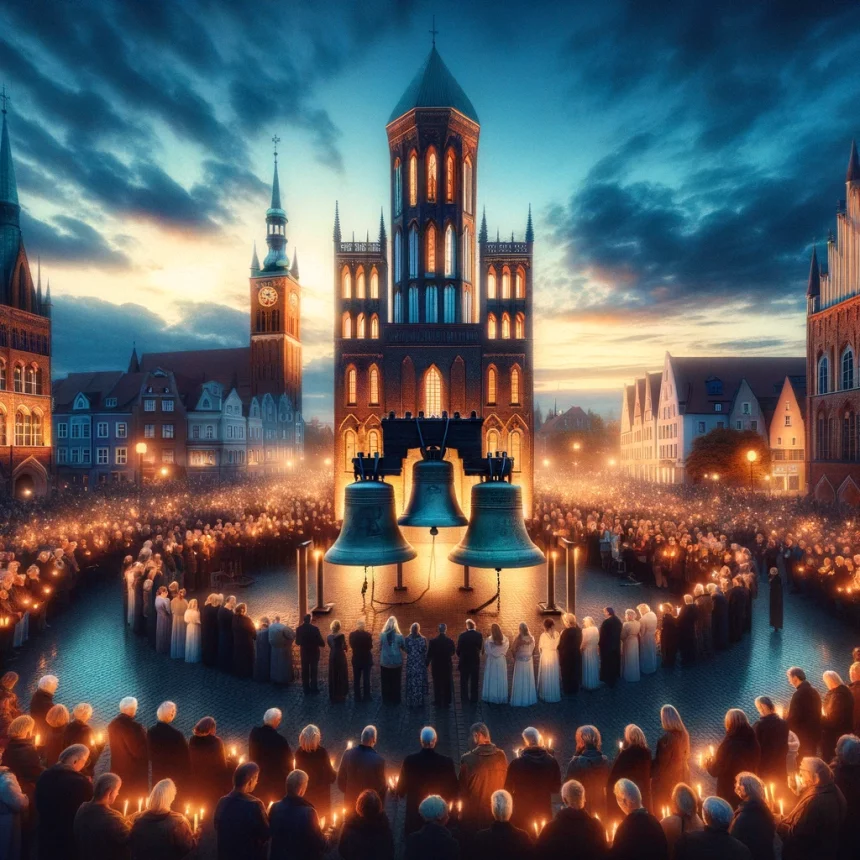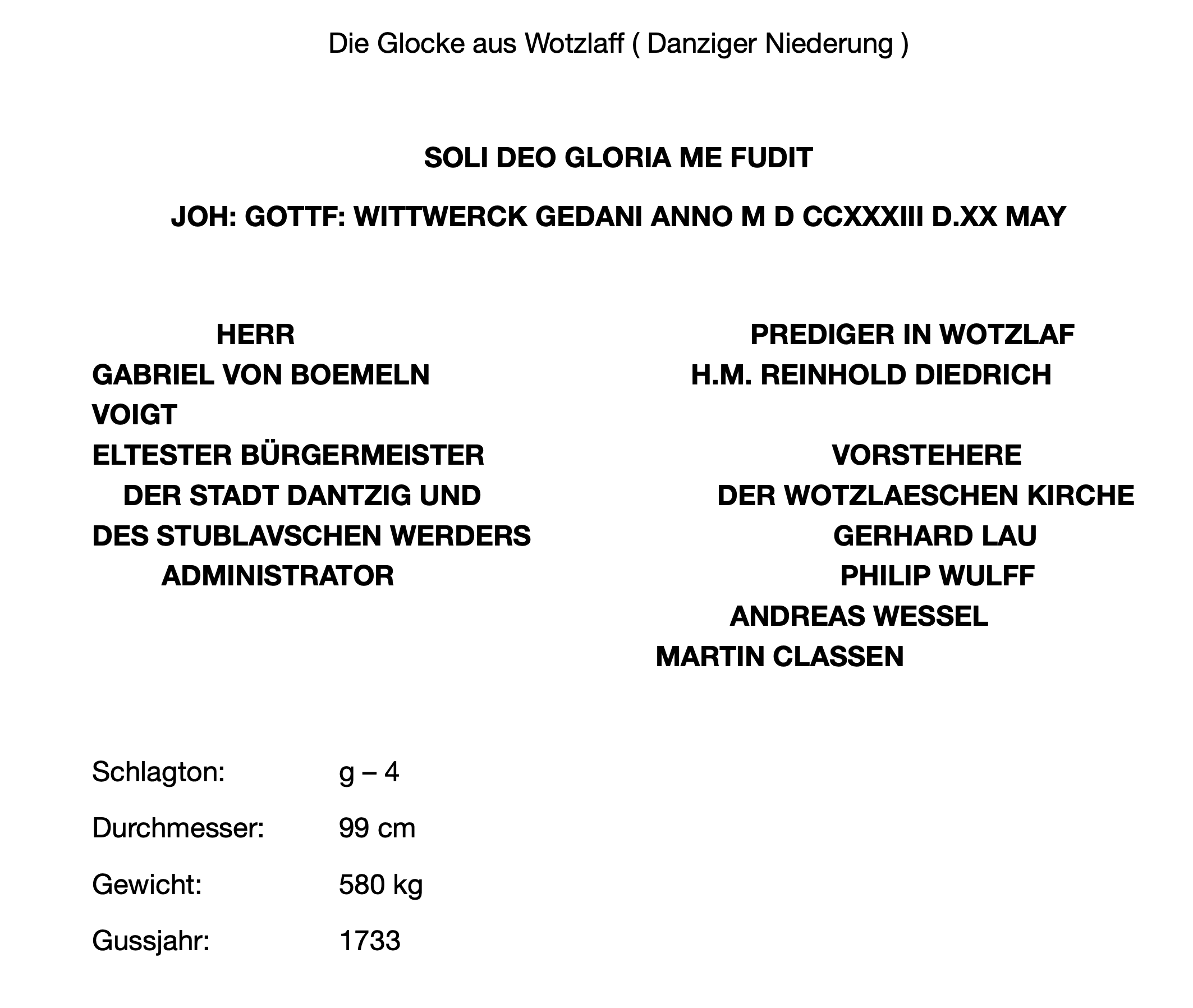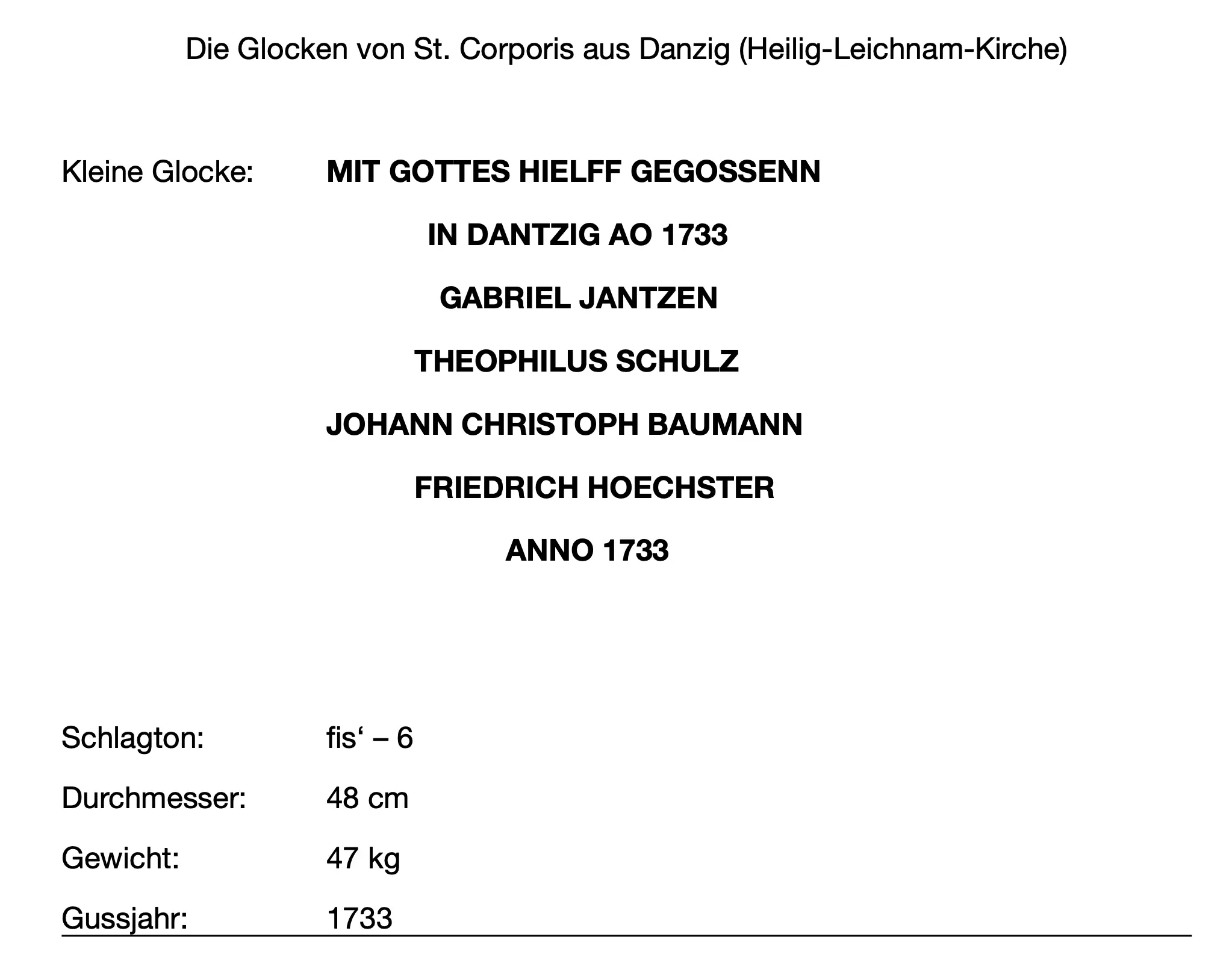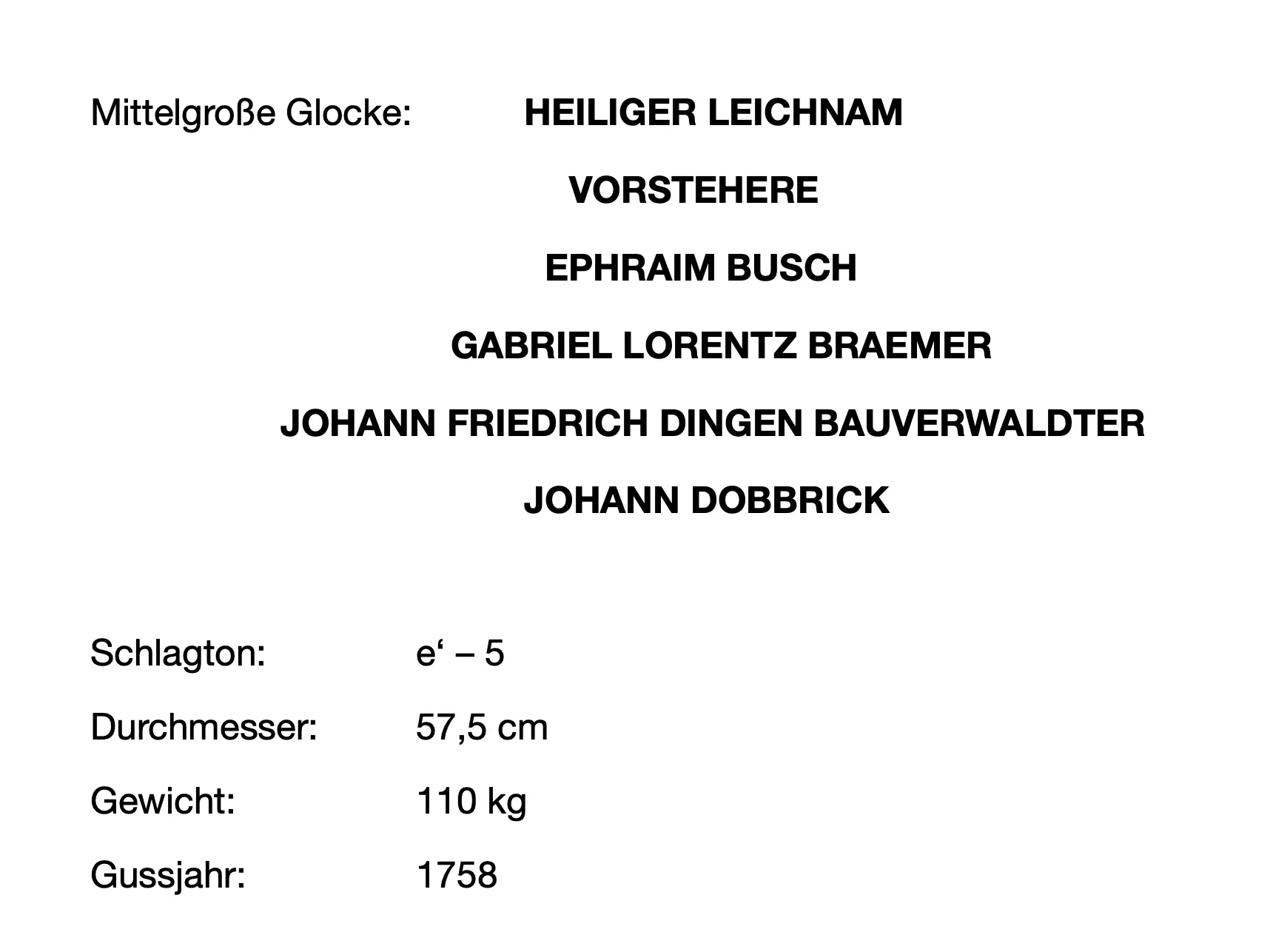Return of Historical Church Bells to Gdańsk
Return of Historical Church Bells to Gdańsk
It’s finally happening!
Thanks to the initiative of the Stiftung Haus Hansestadt Danzig in Lübeck, 3 historical church bells are returning to their place of origin in Gdańsk.
It has been over a year since Prof. Jörg Linowitzki, on behalf of the Haus Hansestadt Danzig, and Prof. Dr. Jaskiewicz, for the “Association for the Preservation of the Tradition of the Artus Court in Gdańsk,” launched a joint project. Following a visit to the Corpus Christi Church in Gdańsk, amidst various plans for the union of the “Bank Brotherhoods at the Artus Court in Gdańsk in Lübeck,” both agreed: “These bells must ring where they have rung for centuries.” Contact was established with Father Rafal Michalak, and liaising with Dr. Martin Evang from the Union of the Evangelical Church as the custodian of the bells was straightforward and productive, setting the stage for the work ahead. Discussions regarding the third bell were conducted with the Archbishop of Gdańsk, Mr. Wojda. Alongside legal considerations, it was crucial to delve into the history, consult a bell expert for an assessment, and contemplate the logistics of dismantling and transport.
About the Bells:
A small bell from the year 1733 and a medium-sized bell from 1758, both cast in Gdańsk, have been located since 2008 in the courtyard of the Museum Haus Hansestadt Danzig in Lübeck, alongside a large bell, also cast on May 20, 1733, in Gdańsk.
During the era of National Socialism, from 1941, countless bells across Poland were dismantled and transported to so-called “bell cemeteries.” They were intended to be melted down for use, among other things, as cartridge casings for the war machinery. At the largest, the Hamburg Bell Cemetery, the value of the bells was assessed, and these three were categorized as “D,” indicating bells of high historical value. The bell cemetery survived the heavy bombings of Hamburg with minimal damage.
The two smaller bells were part of the Holy Sacrament Church in Gdańsk, a site of significant historical importance, from which Jakob Hegge, around 1520, passionately urged the people of Gdańsk to convert to Lutheranism. Today, the church houses a small Polish Catholic community, led by Father Rafal Michalak. They do not recognize the dogma of papal infallibility and celibacy and do not reject LGBT people and gender philosophy. Next to this church, there was a hospital and a cemetery. Since all German cemeteries in Gdańsk were destroyed or leveled, a new memorial for the former German residents of the city, the “Cemetery of Non-Existent Cemeteries,” was established in 2004.
The large bell originated from the Wotzlaff parish church in the Free City of Gdańsk. This church building no longer exists, having been replaced by a much smaller new building.
In 1945, more than 100,000 residents of Gdańsk were forced to flee their city. Many wanted to stay near the Baltic Sea and found refuge in Lübeck. A long period in transit camps for displaced persons awaited them, with Lübeck-Siems hosting the Flender I – III refugee camps, accommodating up to 4,000 refugees, until 1965. In 1951, the St. Michael’s Church Lübeck-Siems was built, where the two smaller bells from the Holy Sacrament Church in Gdańsk were hung. On April 24, 1951, the large bell was hung in the nearby Luther Church in Lübeck-Kücknitz, rescued from the bell cemetery with the help of the last evangelical bishop of Gdańsk, Senior Consistorial Councillor Gerhard Gülzow. It is said that the chime of these bells was a piece of home for hundreds of families.
In 2008, St. Michael’s Church Lübeck-Siems was secularized, and the bells, along with the bell from the Luther Church, were transferred to the Museum Haus Hansestadt Danzig as a permanent loan.
Timeline of the Transfer:
On March 5, 2024, Bishop Bosse-Huber, Pastor Dr. Michalak, and Archbishop Dr. Wojda signed the donation contracts in Berlin. These contracts also outlined how the bells should be handled until they could be returned to their intended place.
The bells will be bid farewell on May 15, 2024, at 7 p.m. at the Museum Haus Hansestadt Danzig, located at Engelsgrube 66, 23552 Lübeck.




